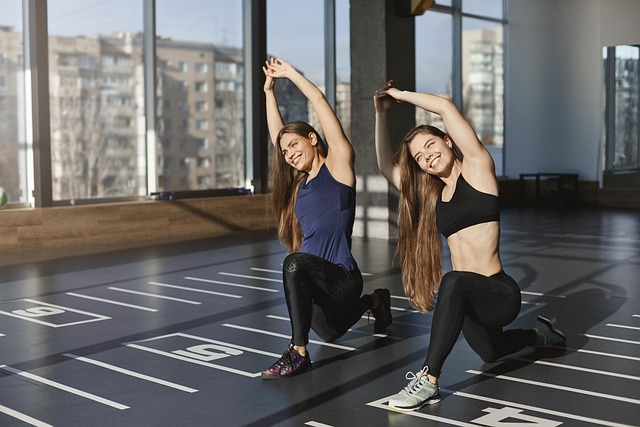Views expressed in this article may or may not express that of Kafui Fitness
Why is Strength Training Important In Everyday Life?
Strength training often brings to mind images of bulging muscles and competitions, but it can also have practical benefits in everyday life. Strong muscles can support joints, helping to prevent injuries, particularly as we age. It also improves balance and coordination, reducing the risk of falls. Practicing lifting with proper form helps to improve posture and can reduce strain on the back and neck. Beyond physical benefits, regular strength training can increase confidence and self-esteem, as well as improve mood and reduce stress levels. In essence, incorporating strength training into a regular exercise routine is not just about increasing muscle mass – it can improve overall physical health and well-being, making everyday tasks easier and enhancing quality of life.
Let’s look at a couple of main reasons why you should incorporate strength training into your workout routine.
Improved Overall Health
First and foremost, strength training is important for your overall health. The benefits of strength training go beyond just looking better. When combined with a healthy diet, it can increase your life span. Strength training can help you live longer, healthier and happier.
It can help you lose weight and build muscle, prevent injuries, get stronger and feel better, and be more flexible. Strength training can also improve your balance and coordination, which is especially helpful if you have a job that requires those skills.
Weight Loss
If you’re trying to shed a few extra pounds, switching your cardio routines for strength-training workouts may be the way to go. Although cardio exercises are excellent for burning calories, they don’t do much to build muscle mass. On the other hand, resistance exercises help you not only burn calories but also build lean muscle tissue. The more muscle tissue you have, the more calories you’ll burn throughout the day – even when you’re at rest.
Consequently, if weight loss is one of your fitness goals, incorporating strength training into your workout routine is a smart move.
Weight Gain
On the other hand, if you are looking to gain weight strength training can also help. In order to lose weight you must be in a caloric deficit and in order to gain weight you must be in a caloric surplus. Putting on learn muscle while being in a caloric surplus can help you reach your weight gain goals.
Improved Mental Health
Exercise is known to improve mental health, but strength training may offer even more benefits. Plenty of studies have backed up the statement that people who participate in strength training at least twice per week have significantly lower levels of anxiety and depression than those who didn’t lift weights at all. What’s more, you’ll also have better sleep quality and feel more confident about your body. If you’re looking for a workout that will boost your mood as well as your physical health, strength training is a great option.
Boosted Energy Levels
If you find yourself feeling tired all the time, strength training can give you a much-needed energy boost. When you work your muscles, your body releases enzymes that stimulate the production of energy molecules called ATP. This increase in ATP can help to combat fatigue and give you the energy you need to power through your day-to-day activities.
Improved Bone Density
One of the most important benefits of strength training is improved bone density. As we age, our bones naturally start to deteriorate and become weaker. This can lead to an increased risk of fractures and breaks. However, regular strength training can help slow down the natural deterioration of your bones and improve your overall bone health.
In addition to improving your overall bone health, strength training can also help reduce the risk of developing osteoporosis. Osteoporosis is a condition that causes the thinning of bones and makes them more susceptible to breaks and fractures. According to the National Institutes of Health, women are especially at risk for developing osteoporosis. However, regular strength training can help reduce this risk by improving bone density.
Improved Joint Health
Another benefit of strength training is improved joint health. As we age, our joints also start to deteriorate and become weaker. This can lead to pain and mobility issues. Regular strength training can help improve joint health by increasing the surrounding muscle tissue. Stronger muscles provide support for joints and can help take some of the pressure off of them. This can help reduce pain and improve mobility.
Improved Heart Health
In addition to improving your skeletal health, strength training can also do wonders for your cardiovascular system. A study published in the Journal of Applied Physiology found that just 20 minutes of moderate-intensity resistance training can lead to significant improvements in heart function.
So, if you’re looking for a way to reduce your risk of heart disease and keep your ticker in tip-top shape, start lifting some weights!
How to start strength training?
If you’re interested in incorporating strength training into your fitness routine, the first step is to determine your goals. Are you hoping to improve endurance, increase muscle mass, or both? Once you know what you want to achieve, it’s important to consult with a trainer or fitness professional who can create a personalized plan for you and teach proper form for exercises.
It’s also important to track your progress by keeping a training journal and adjusting your program as needed. In addition to regularly scheduled strength training sessions, it’s important to maintain a balanced diet and incorporate cardio and stretching into your routine as well.
Remember that slow and steady progress is key – don’t be afraid to start with lighter weights and work your way up as you continue gaining strength. Overall, starting a strength training program may seem intimidating at first, but having clear goals and following professional advice will set you on the path towards success.
Conclusion:
Regular strength training is important for everyone, not just athletes or bodybuilders.
The health benefits of strength training are well-documented and far-reached. It has been shown to improve heart health, increase bone density (which can help prevent osteoporosis), improve joint function, and increase insulin sensitivity (which can help prevent type 2 diabetes). In addition, people who engage in regular strength training tend to have lower blood pressure and a reduced risk of developing metabolic syndrome.
Strength training can also help reduce stress by releasing endorphins, which are natural painkillers.
It reduces the risk of heart disease and high blood pressure as well as can help prevent injuries and falls, especially for older people who are more likely to experience falls because of their less stable joints.
Strength training can help you lose weight and build muscle, get stronger, which will make everyday life easier (like lifting heavy luggage, carrying groceries, etc.)
The benefits of strength training include feeling better about yourself and improving flexibility through stretching and strengthening muscles around the hips and lower back areas that are often neglected in daily life but absolutely essential for good posture!
Start with two days a week of strength training and see how your body changes!




